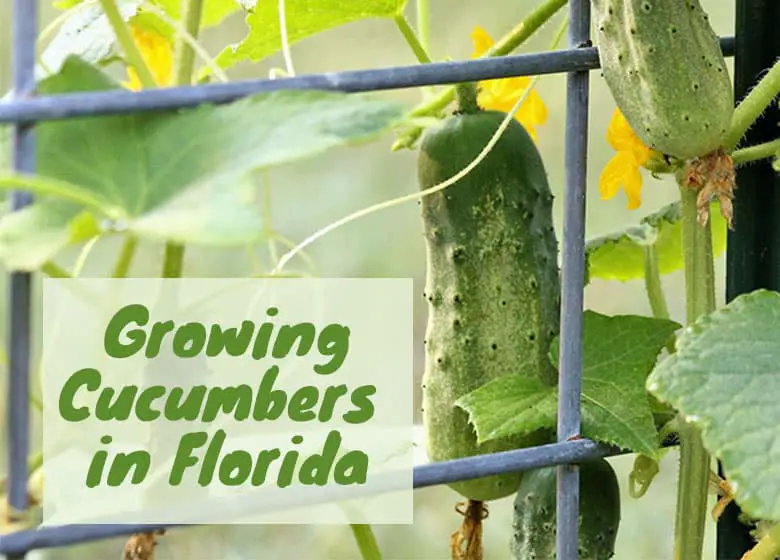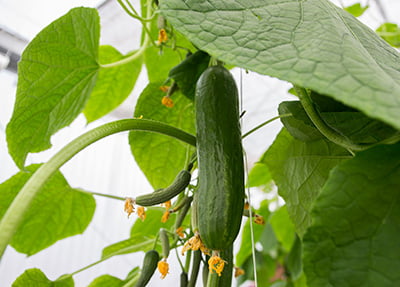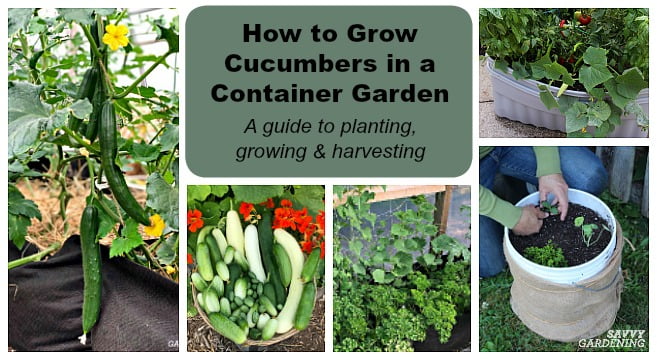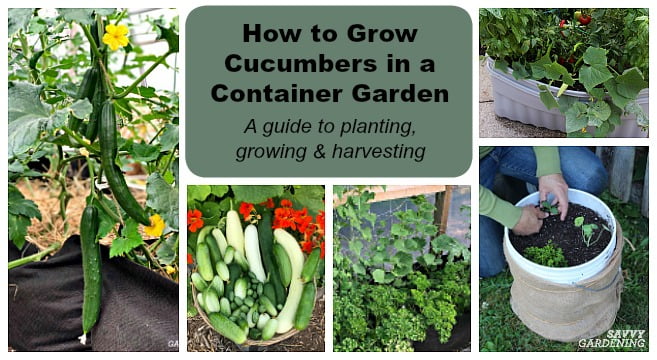So you’ve decided to try your hand at growing cucumbers in Florida, huh? Well, you’re in luck! This article is packed with practical tips and tricks that will help you successfully cultivate these refreshing and crunchy veggies right in your own backyard. From choosing the right cucumber variety for the Florida climate to providing the optimal growing conditions, we’ve got you covered. With our handy advice, you’ll be enjoying homegrown cucumbers in no time, and impressing your friends and family with your green thumb skills!

Choosing the Right Cucumber Variety
Consider the climate
When it comes to growing cucumbers in Florida, it’s crucial to consider the climate. Florida’s warm and humid weather can present some challenges, but with the right cucumber variety, you can overcome them. Look for cucumber varieties that are known to thrive in hot climates. These varieties are better adapted to withstand the intense Florida heat and humidity.
Choose disease-resistant varieties
Diseases can pose a significant threat to cucumber plants, especially in Florida’s tropical climate. To minimize the risk of diseases, it’s essential to choose disease-resistant cucumber varieties. These varieties have been specifically bred to resist common cucumber diseases, such as powdery mildew, downy mildew, and bacterial wilt. Disease-resistant varieties give you a better chance of a successful harvest, even in the face of disease pressure.
Select cucumber types
Cucumbers come in different types, each with its own unique characteristics. The two main types of cucumbers are slicing cucumbers and pickling cucumbers. Slicing cucumbers are larger and have a crisp texture, perfect for fresh salads and sandwiches. Pickling cucumbers are smaller and have a firmer texture, making them ideal for pickling. Consider your personal preference and intended use when selecting cucumber types to grow in your Florida garden.
Preparing the Soil
Check and adjust soil pH
Before planting cucumbers, it’s important to check and adjust the soil pH. Cucumbers thrive in slightly acidic soil, with a pH range between 6.0 and 7.0. Florida’s soil tends to be alkaline, so it’s crucial to test the pH and make any necessary adjustments. You can lower the pH by adding elemental sulfur or organic matter, such as compost or peat moss. Aim for a pH level that is slightly acidic to ensure optimal growth and nutrient availability for your cucumber plants.
Add organic matter
To improve the quality of your soil and provide essential nutrients to your cucumber plants, add organic matter. Organic matter, such as compost, helps retain moisture, improves soil structure, and enhances nutrient retention. Mix well-rotted compost or other organic materials into the soil before planting. This will create a nutrient-rich environment that supports healthy cucumber growth and development.
Improve drainage
Proper drainage is crucial for growing cucumbers successfully. Florida’s heavy rains and high humidity can lead to waterlogged soil, which can rot the roots and cause disease. To improve drainage, consider raised beds or mounds. You can also add organic matter, such as compost or peat moss, to improve the soil’s ability to drain excess water. Well-draining soil promotes healthy root development and reduces the risk of fungal diseases.

Planting Cucumber Seeds or Transplants
Sow seeds directly or start transplants indoors
You have two options when it comes to planting cucumber seeds: sowing them directly into the garden or starting transplants indoors. Direct sowing is a common method in Florida due to the warm climate. However, if you want an early start, you can start cucumber seeds indoors and transplant them once the danger of frost has passed. Starting transplants indoors allows you to control the growing environment and gives your cucumbers a head start before being planted in the garden.
Choose the right time for planting
Timing is crucial when it comes to planting cucumbers in Florida. Cucumbers are warm-season vegetables, so wait until all danger of frost has passed before planting them outdoors. In Florida, this typically means planting cucumbers in early spring or late winter, depending on the specific region. Planting too early can expose your cucumbers to cold temperatures, while planting too late may result in poor growth due to the excessive heat. Research the optimal planting time for your specific area in Florida to ensure success.
Prepare the planting holes
Before planting your cucumber seeds or transplants, prepare the planting holes. Dig holes that are about 1 foot deep and wide, spaced about 2 to 3 feet apart. Loosen the soil at the bottom of the holes and mix in compost or other organic matter. This will provide a nourishing environment for your cucumber plants and help them establish strong root systems. Once the holes are prepared, carefully plant your cucumber seeds or transplants, covering them with soil and gently pressing down to ensure good soil-to-seed contact.
Providing Proper Watering
Water deeply and regularly
Cucumbers have high water requirements, especially in Florida’s hot and humid climate. To ensure your cucumber plants stay hydrated, water deeply and regularly. Aim to provide about 1 to 1.5 inches of water per week, either through rainfall or irrigation. Watering deeply encourages the cucumber roots to grow deeper into the soil, making them more resilient to heat and drought. Avoid overhead watering as it can increase the risk of disease. Instead, focus on delivering water directly to the base of the plants.
Use a drip irrigation system
To make watering more efficient and precise, consider using a drip irrigation system for your cucumber plants. Drip irrigation delivers water directly to the roots, minimizing water waste and reducing the risk of diseases caused by wet leaves. The slow and steady release of water also allows the soil to absorb moisture more effectively, promoting healthy cucumber growth. Additionally, using a drip irrigation system can save water and time compared to traditional watering methods.
Mulch to retain moisture
Mulching is an excellent technique to help retain moisture in the soil and reduce weed growth around your cucumber plants. In Florida’s hot climate, mulch acts as a protective layer, keeping the soil cool and reducing evaporation. Organic mulches, such as straw, wood chips, or compost, are ideal for cucumber plants. Apply a layer of mulch around the base of the plants, ensuring it doesn’t touch the stems directly to prevent rotting. Mulching not only conserves moisture but also helps maintain a more stable soil temperature, promoting healthy cucumber growth.

Providing Adequate Sunlight and Temperature
Ensure sufficient sunlight
Cucumbers are sun-loving plants, and they thrive in full sunlight. In Florida, it’s crucial to ensure your cucumber plants receive at least 6 to 8 hours of direct sunlight each day. Choose a location in your garden that gets ample sunlight and avoid areas with excessive shade. Adequate sunlight will help your cucumber plants photosynthesize efficiently, resulting in healthier foliage, stronger vines, and better fruit production.
Provide shade during extreme heat
While cucumbers need plenty of sunlight, they can also suffer from extreme heat in Florida. When temperatures soar, providing some shade to your cucumber plants can help prevent stress and sunburn. You can use shade cloth or create temporary shade structures using bamboo poles and light-colored fabric. The shade should be provided during the hottest part of the day and removed once temperatures cool down. Be mindful not to block too much sunlight, as cucumber plants still require a significant amount of light to thrive.
Protect from frost
Although Florida is generally a warm climate, some regions experience occasional frost during the winter months. Frost can be damaging to cucumber plants, even causing them to die. To protect your cucumber plants from frost, cover them with a frost blanket or row cover when frost is expected. These covers create a protective barrier and trap heat, preventing your cucumber plants from being damaged by freezing temperatures. Remove the covers during the day to allow for proper air circulation and sunlight exposure.
Practicing Proper Trellising and Support
Install trellises or supports
Growing cucumbers on trellises or supports offers several advantages. Trellising cucumbers saves space, improves air circulation, and increases exposure to sunlight, resulting in healthier plants and higher yields. Install trellises or supports in your garden before planting the cucumber seeds or transplants. Ensure the trellises or supports are sturdy and tall enough to accommodate the growth of cucumber vines, which can reach several feet in length.
Train vines as they grow
As your cucumber vines begin to grow, it’s important to guide and train them properly. Gently weave the cucumber vines through the trellis or supports, ensuring they have ample room to spread and climb. You can use soft ties or plant clips to secure the vines to the trellis without damaging them. Regularly check the vines and redirect any wayward growth to maintain an organized and well-supported structure. Proper training ensures that your cucumber plants receive adequate light, air, and support for optimal growth.
Consider space-saving techniques
If you have limited garden space, consider implementing space-saving techniques for your cucumber plants. Compact varieties or bush cucumbers are excellent options for small gardens or containers. These varieties take up less space and don’t require trellising or extensive support. Alternatively, you can grow cucumbers vertically using a garden tower, hanging baskets, or a vertical garden system. Vertical gardening maximizes your space and allows cucumbers to grow upwards, saving valuable ground space for other plants.

Fertilizing Cucumber Plants
Perform soil testing for nutrient deficiencies
Before fertilizing your cucumber plants, it’s essential to perform a soil test to determine any nutrient deficiencies. Florida’s sandy soil tends to lack certain essential nutrients, such as nitrogen, potassium, and phosphorus. A soil test will help you identify any imbalances and guide you in selecting the right fertilizer. Contact your local agricultural extension office for information on how to collect and submit a soil sample for testing.
Apply balanced fertilizers
To provide your cucumber plants with essential nutrients, apply balanced fertilizers. Balanced fertilizers contain a mix of nitrogen, phosphorus, and potassium, commonly referred to as NPK. These three nutrients are essential for cucumber growth and development. Follow the recommendations from your soil test results or consult with a gardening expert to determine the appropriate amount of fertilizer to apply. Apply the fertilizer evenly around the base of the cucumber plants, avoiding direct contact with the stems or leaves.
Avoid excessive nitrogen
While nitrogen is a vital nutrient for cucumber plants, too much nitrogen can promote excessive foliage growth at the expense of fruit production. In Florida’s warm climate, excessive nitrogen can also increase the risk of diseases, such as powdery mildew. To avoid these issues, opt for balanced fertilizers with a slightly lower nitrogen content. Additionally, consider using organic fertilizers, such as compost or well-rotted manure, to provide a slow release of nutrients without the risk of nitrogen overload.
Controlling Pests and Diseases
Use organic pest control methods
Dealing with pests is a common challenge when growing cucumbers, but you can manage them effectively using organic pest control methods. Avoid using chemical pesticides that can harm beneficial insects and contaminate the environment. Instead, employ natural pest control techniques such as handpicking pests, installing physical barriers like row covers, or introducing predator insects that prey on garden pests. By using organic pest control methods, you can minimize the impact of pests while maintaining a healthy and eco-friendly garden.
Monitor for common pests
Some common pests that can damage cucumber plants in Florida include cucumber beetles, aphids, and spider mites. Regularly monitor your plants for signs of pest activity, such as chewed leaves, curling foliage, or sticky residue. Spotting pest infestations early allows you to take prompt action before the pests cause severe damage. Monitor the undersides of leaves, where pests often congregate, and inspect the stems and fruits for any signs of damage.
Identify and treat diseases promptly
Cucumber plants in Florida are susceptible to various diseases, including powdery mildew, downy mildew, and bacterial wilt. Prompt identification and treatment are crucial to prevent the spread and severity of these diseases. Regularly inspect your cucumber plants for any signs of diseases, such as white powdery growth on leaves or wilting foliage. If you notice any symptoms, apply appropriate organic fungicides or seek advice from a local gardening expert to determine the best course of action.

Harvesting Cucumbers
Check for maturity
Knowing when to harvest your cucumbers is essential to ensure optimal flavor and texture. Most cucumber varieties are best harvested when they reach their mature size, typically between 6 and 8 inches in length. Check your specific cucumber variety for the recommended size and color at maturity. Ripe cucumbers should have vibrant color, firm texture, and smooth skin. Avoid waiting too long to harvest, as overripe cucumbers can lose their flavor and develop a bitter taste.
Harvest cucumbers carefully
When harvesting cucumbers, handle them with care to avoid damaging the vines or fruits. Use a pair of garden shears or scissors to cut the cucumbers from the vine, leaving a small stem attached. Avoid twisting or pulling the cucumbers, as this can damage the plant and potentially lead to disease or reduced fruit production. Place harvested cucumbers in a basket or container to avoid bruising and keep them in the best possible condition.
Regularly harvest to promote new growth
Regularly harvesting cucumbers is essential for promoting continuous fruit production and encouraging new growth. The more cucumbers you harvest, the more your plant will produce. Check your cucumber plants every few days, as cucumbers can grow rapidly, especially in Florida’s warm climate. Harvesting cucumbers at their proper size also promotes the development of additional flowers and fruits, ensuring a bountiful harvest throughout the growing season.
Tips for Success
Provide good air circulation
Proper air circulation is essential for healthy cucumber plants, especially in Florida’s humid climate. Good air circulation helps prevent fungal diseases and keeps the foliage dry, reducing the risk of foliar issues. Avoid overcrowding your cucumber plants by planting them with adequate spacing between each plant. Prune any dense foliage that may hinder air movement, and consider planting cucumbers in raised beds or on elevated mounds to improve airflow around the plants.
Rotate crops annually
To prevent the accumulation of pests and diseases in the soil, practice crop rotation by changing the location of your cucumber plants each year. Avoid planting cucumbers or other related crops, such as squash or melons, in the same spot for consecutive growing seasons. Rotating crops helps disrupt pest cycles and reduces the risk of soilborne diseases. If space is limited, consider growing cucumbers in containers or utilizing different areas of your garden each year.
Maintain proper plant spacing
Giving your cucumber plants enough space to grow is crucial for their overall health and productivity. Proper plant spacing ensures adequate sunlight penetration, air circulation, and reduces competition for resources among the plants. Be sure to follow the recommended spacing guidelines for your specific cucumber variety. Giving each plant enough room allows them to develop robust root systems and prevents issues such as overcrowding, reduced fruit production, and increased susceptibility to diseases.
By following these guidelines and tips, you can successfully grow cucumbers in Florida’s unique climate. Remember to select the right cucumber variety, prepare the soil adequately, provide proper watering and sunlight, practice trellising and support techniques, fertilize appropriately, control pests and diseases, harvest at the right time, and implement additional tips for success. Enjoy a bountiful cucumber harvest and delicious homegrown cucumbers throughout the growing season!



